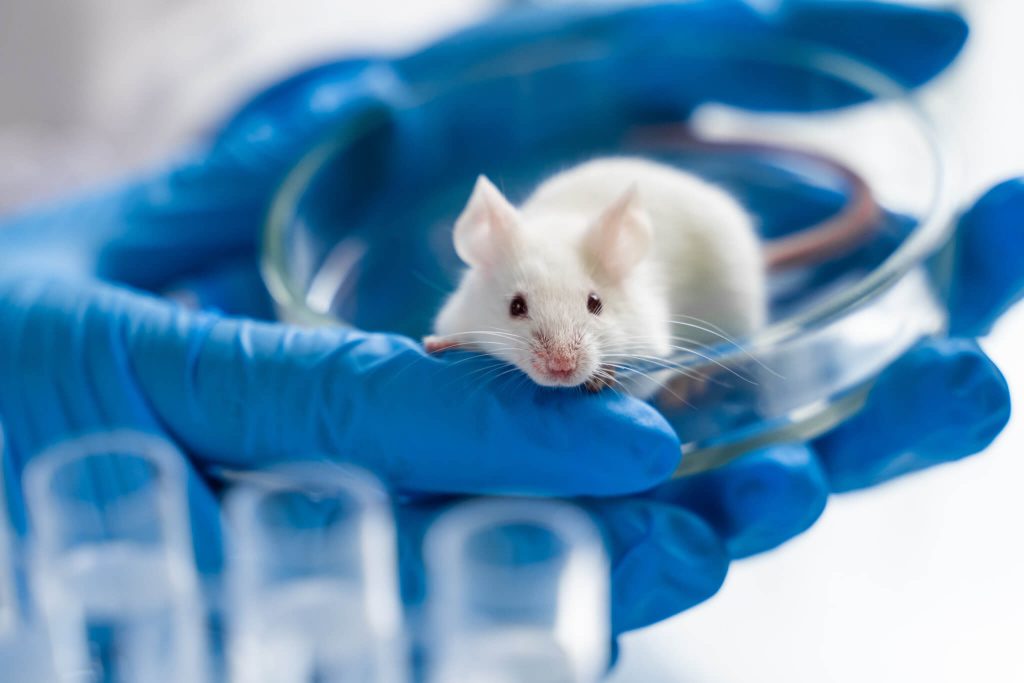

Lab mouse unrelated to study. (© filin174 – stock.adobe.com)
BEIJING — The idea of same-sex biological reproduction in mammals has long been thought impossible, like trying to build a house with only half the blueprint. But researchers in China have achieved what many believed couldn’t be done: they’ve created viable mice that lived until adulthood using genetic material from two fathers, unlocking new possibilities in reproductive science.
This landmark achievement, published in Cell Stem Cell, represents a significant advance in reproductive biology and opens new possibilities in regenerative medicine.
The team led by researchers at the Chinese Academy of Sciences (CAS) in Beijing successfully modified specific genetic regions in mouse embryonic stem cells to overcome what scientists have long considered a fundamental barrier to same-sex reproduction in mammals. Previous attempts to create bi-paternal mice had failed, with embryos stalling at early developmental stages. However, this new approach, targeting 20 key genetic locations, enabled the first-ever successful development of bi-paternal mice to adulthood.
“The unique characteristics of imprinting genes have led scientists to believe that they are a fundamental barrier to unisexual reproduction in mammals,” explains Qi Zhou, a co-corresponding author from CAS. “Even when constructing bi-maternal or bi-paternal embryos artificially, they fail to develop properly, and they stall at some point during development due to these genes.”
Previous scientists tried a different strategy to create mice with two fathers. They first attempted to create egg cells in the lab using special cells from male mice that can transform into any type of cell, like blank building blocks that can become whatever the body needs. The idea was to then fertilize these lab-created eggs with sperm from another male mouse. However, this approach didn’t work because when genetic material from two males was combined in this way, it created problems in how genes functioned.
The new research team took a completely different approach. Instead of trying to create eggs, they focused on carefully editing specific parts of the genetic code. They used various techniques to change, remove, or adjust specific genes that control how genetic material from parents normally works together. This new method not only allowed them to successfully create mice with two fathers, but it also resulted in especially versatile stem cells.


“This work will help to address a number of limitations in stem cell and regenerative medicine research,” says Wei Li, the study’s corresponding author from CAS. The implications extend beyond reproductive biology, potentially advancing our understanding of cellular development and regenerative medicine applications.
One of the most fascinating aspects of this research was the creation of functional placentas from bi-paternal embryos. The placenta, an organ crucial for mammalian development, typically requires precise genetic contributions from both parents. The team’s success in creating functional bi-paternal placentas represents a significant breakthrough in understanding reproductive biology.
The surviving bi-paternal mice showed intriguing characteristics. They grew faster than normal mice and displayed reduced anxiety-like behaviors in behavioral tests. However, they also had shorter lifespans, living only about 60% as long as typical mice. These differences provide valuable insights into how parental genes influence development and aging.
“These findings provide strong evidence that imprinting abnormalities are the main barrier to mammalian unisexual reproduction,” notes Guan-Zheng Luo of Sun Yat-sen University in Guangzhou. “This approach can significantly improve the developmental outcomes of embryonic stem cells and cloned animals, paving a promising path for the advancement of regenerative medicine.”
The research team plans to extend their experimental approaches to larger animals, including monkeys, though they acknowledge this will require considerable effort due to different imprinting gene combinations across species.
The potential application to human medicine remains unclear, particularly given current ethical guidelines. The International Society for Stem Cell Research explicitly prohibits heritable genome editing for reproductive purposes and the use of human stem cell-derived gametes for reproduction, citing safety concerns.
Paper Summary
Methodology
The researchers used a multi-step process involving several cutting-edge techniques. They first created haploid embryonic stem cells from sperm, then used CRISPR gene editing to modify specific imprinted regions. These modified cells were combined with sperm from another male mouse through a process called nuclear transfer. The resulting embryos were either transferred directly to surrogate mothers or used to create tetraploid embryos, which were then implanted.
Results
From hundreds of attempts, the team successfully produced several generations of bi-paternal mice. The most successful version, involving 20 genetic modifications, achieved a survival rate of about 36.7%. The surviving mice showed normal development in many aspects but exhibited faster growth, reduced anxiety, and shorter lifespans compared to normal mice.
Limitations
The research faced several significant limitations. The success rate remained relatively low, and the surviving mice showed some abnormalities. The technique required complex genetic modifications and sophisticated laboratory procedures, making it impractical for widespread application. Additionally, female bi-paternal mice were infertile, limiting the ability to create multiple generations.
Takeaways and Discussion
This research demonstrates that the barrier to same-sex reproduction in mammals is primarily genetic rather than physical. It provides crucial insights into genomic imprinting and its role in development. While the immediate applications are limited, the findings could lead to improved understanding of reproductive biology and potential treatments for infertility.
Funding and Disclosures
The research was supported by multiple Chinese institutions, including the Chinese Academy of Sciences and the National Natural Science Foundation of China. One of the corresponding authors serves as a member of the Cell Stem Cell advisory board.
Publication Information
This study, titled “Adult bi-paternal offspring generated through direct modification of imprinted genes in mammals,” was published online in Cell Stem Cell on January 28, 2025. The research was conducted by a team led by Zhi-kun Li, with contributions from multiple institutions in China.







